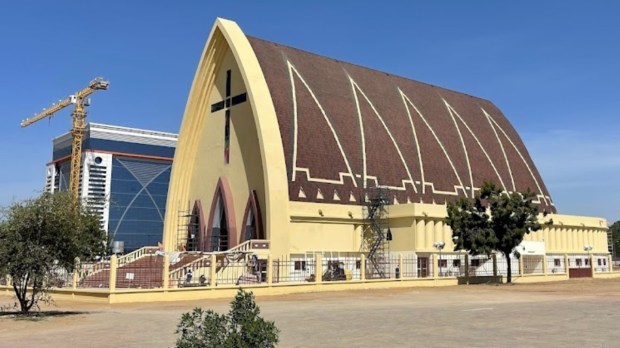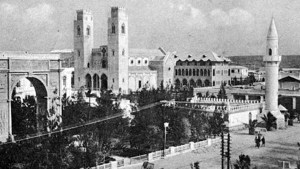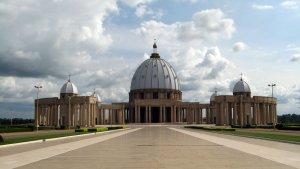After its destruction during the civil war in 1980 and long uncertainty as to the future of the damaged structure, the cathedral of N’Djamena, the capital of Chad, is finally rebuilt and should be reopened for worship in April. This is a real rebirth, and a beautiful symbol of hope and peace for the Christians of Chad.
This cathedral has a turbulent history. It was in use from its construction in 1965 until it was destroyed by a bombing in April 1980 during the civil war. For years afterwards, the usefulness of a possible reconstruction was debated, until Pope John Paul II celebrated Mass in front of its ruins in 1990, an event that deeply marked the Chadians.
The bishop at the time decided to have it rebuilt and launched fundraising efforts, but it wasn’t until 2013 that President Idriss Déby finally decided to undertake its complete rehabilitation, using state funds, to the tune of about 5.9 billion CFA francs (nearly $10 million US dollars).
Due to economic crises and COVID, the work was delayed. At last, however, the reconstruction is real: the impressive framework, in the shape of an overturned ship’s hull, has been constructed, and the interior painted and fitted out. All that is missing for an opening to the faithful, announced for April 2023, is a few reception rooms and the installation of the altar.
From the nave to the choir and its chapel, the cathedral is 230 feet long and 115 feet wide, with an area of more than 19,000 square feet. It will be able to accommodate up to 2,000 faithful.
“Thanks to their faith, courage and determination, we have inherited a magnificent monument that is the pride of Chadians of all faiths,” said Archbishop Edmond Djitangar, the Metropolitan Archbishop of N’Djamena.
In the meantime, the faithful meet in a cathedral tent, which has been in use since 2013, where more than 1,000 of them gather every Sunday. They are all looking forward to the opening of their cathedral in this Muslim-majority country, where Catholics represent nearly 40% of the population, a figure that is constantly increasing.
The French connection
In this country, where the first missionaries didn’t arrive until 1929, the decision to build a cathedral is linked to an important figure of European history. Indeed, during World War II it was from Fort-Lamy (the former name of N’Djamena) that the French troops under Philippe Leclerc left to join Free France in fighting Axis forces in Libya, the Battle of Normandy, and the liberation of Paris and Strasbourg. In 1942, Leclerc and his companions had vowed to build a church in Fort-Lamy, under the patronage of Our Lady of Victories, entrusting their military campaign to the Virgin Mary.
With contributions from all sides, including Muslim notables from Chad, a first project was launched after the Liberation. However, it was never completed, and was revived at the end of the 1950s by Bishop Dalmais, the first bishop of the diocese, who said at the time, “This cathedral is a beautiful Christian testimony in a country where the faith is still ignored by a large part of the population.”
Our Lady of Peace was inaugurated and consecrated five years after Chad’s independence in 1965. Destroyed by a fratricidal war in 1980, its reconstruction is a symbol of peace and hope.



